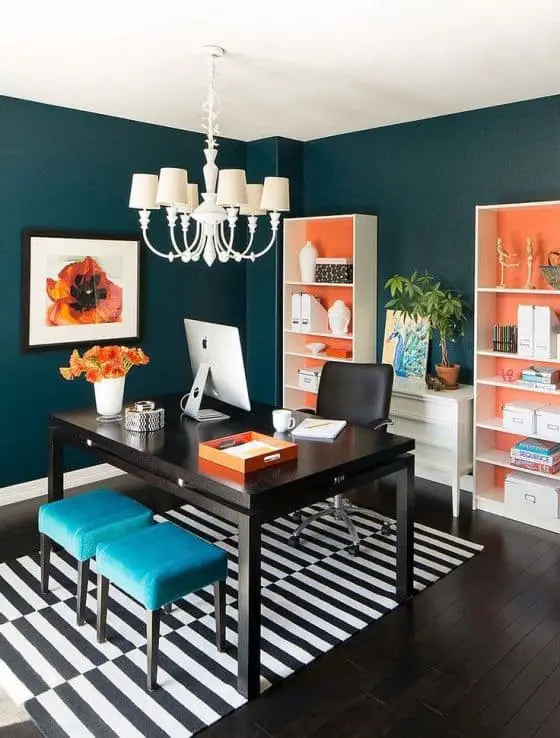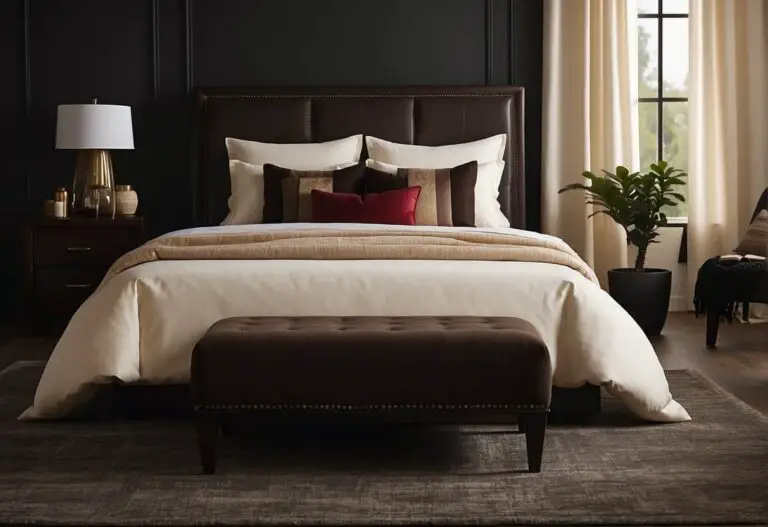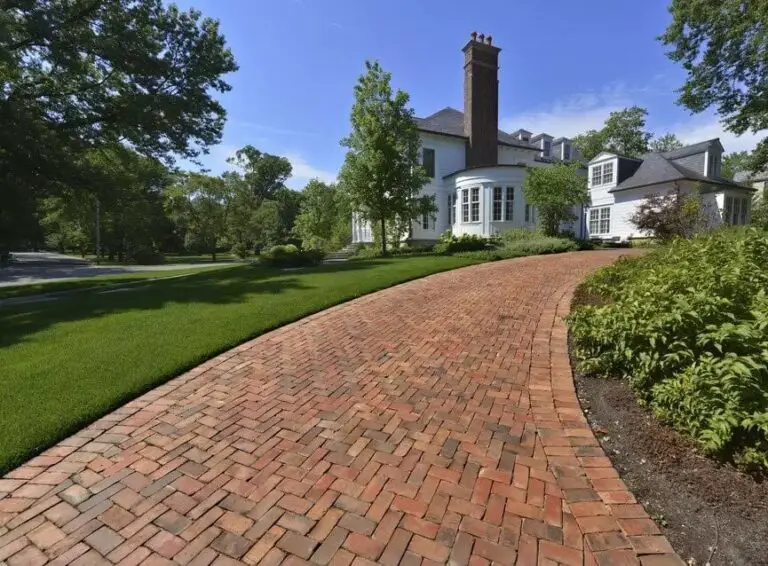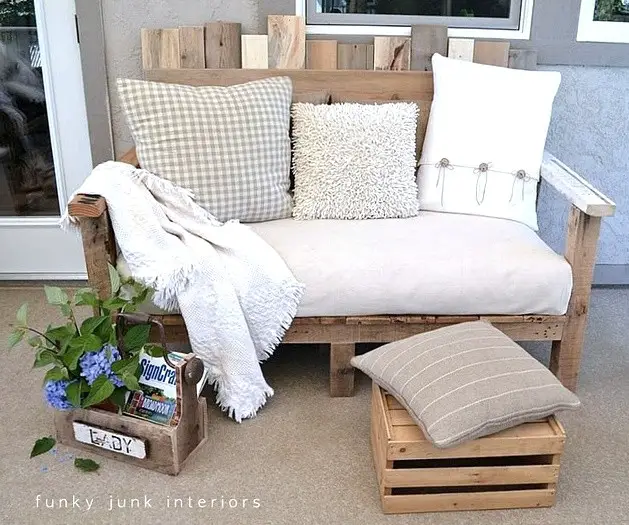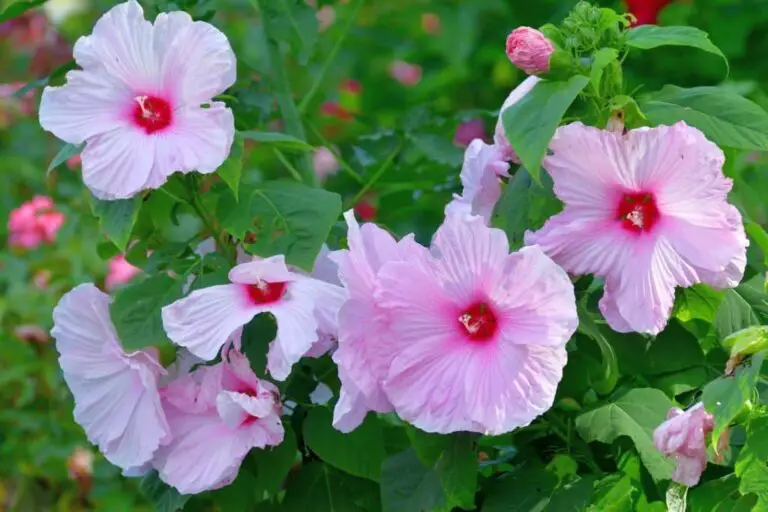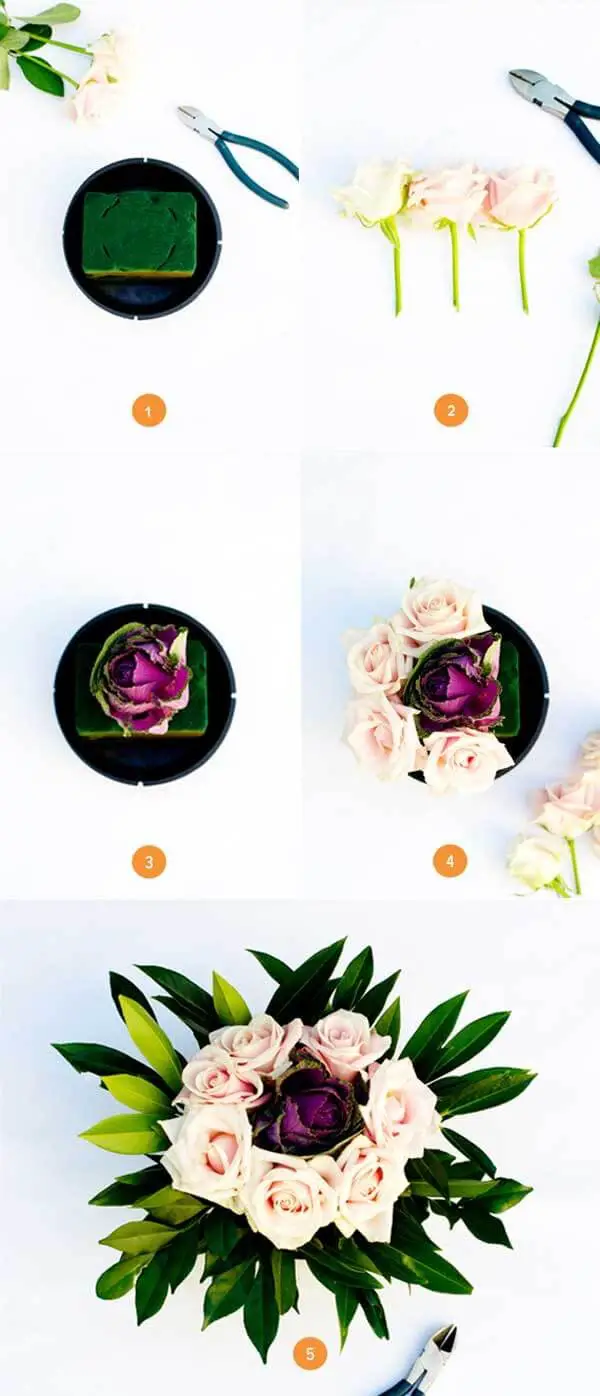10 Creative Dog Potty Area Ideas For Your Backyard Oasis
Having a designated spot in your yard for your dog to relieve themselves is not only a matter of practicality but also one of consistency and training. It’s a game-changer that keeps things tidy, saves your grass from damage, and promotes good habits in your furry friend. By containing the mess in one area, you’ll avoid the hassle of cleaning up after your dog has done their business elsewhere in the yard.
This approach also helps to prevent the spread of diseases by keeping the area clean and free of contaminants. In addition to these benefits, setting up a backyard dog potty area is a smart move because it’s cleaner and more convenient than having to search for surprises throughout the yard. It’s easy to know exactly where to go when cleanup time comes around, and your dog will quickly learn what behavior is acceptable in this designated spot.
Overall, creating a dedicated area for your dog to do their business can make a significant difference in maintaining a clean and healthy yard, while also promoting good habits in your furry friend.
Natural Grass Area
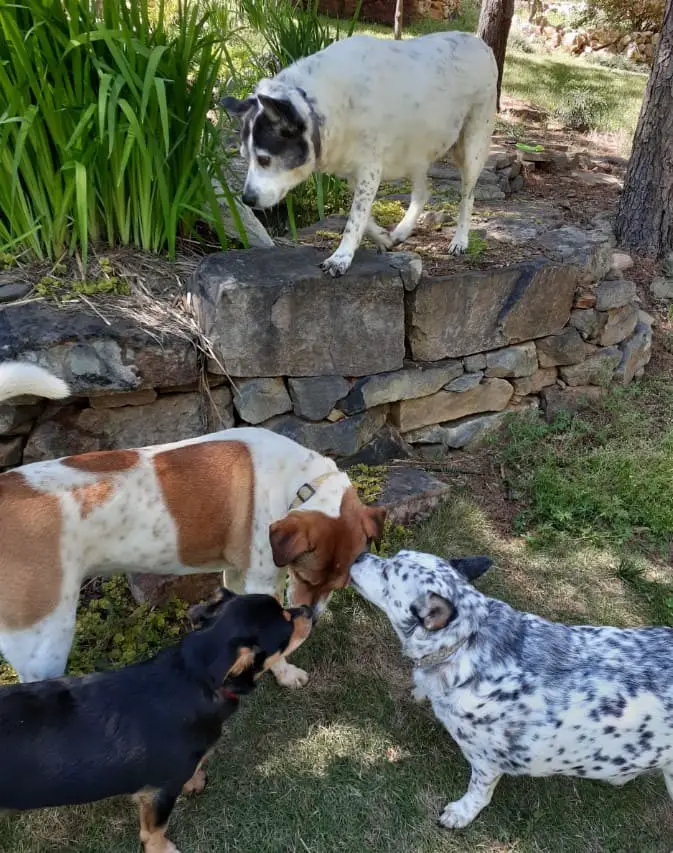
When it comes to providing a potty area for your furry friend, using natural grass as the go-to spot may seem like a timeless tradition. And for good reason – a lush patch of green can be the perfect haven for your dog to do their business. Not only does it create a visually appealing landscape, but the soft blades of grass also provide a comfortable surface for your pup’s paws. However, it’s essential to consider that repeated use by your dog can quickly take its toll on the grass.
To keep this natural solution in top condition, you’ll need to make sure to maintain and care for the area regularly.
Keeping Grass Healthy
To keep your lawn thriving and ready for those inevitable canine playtime sessions, a few simple practices can make all the difference. First, ensure you’re watering your grass regularly – this will help prevent it from drying out or turning an unflattering shade of yellow. Consistent hydration also encourages strong growth and helps wash away any lingering debris.
Next, choose a pet-friendly fertilizer to give your lawn the boost it needs without exposing your furry friend to harsh chemicals. With a little research, you can find a suitable option that promotes healthy grass growth while keeping your pup’s paws and nose safe.
Finally, don’t forget to give your lawn some room to breathe.
Aerating the soil from time to time allows it to absorb water and nutrients more effectively, making your grass stronger and more resilient in the face of those enthusiastic doggy play sessions.
Artificial Turf
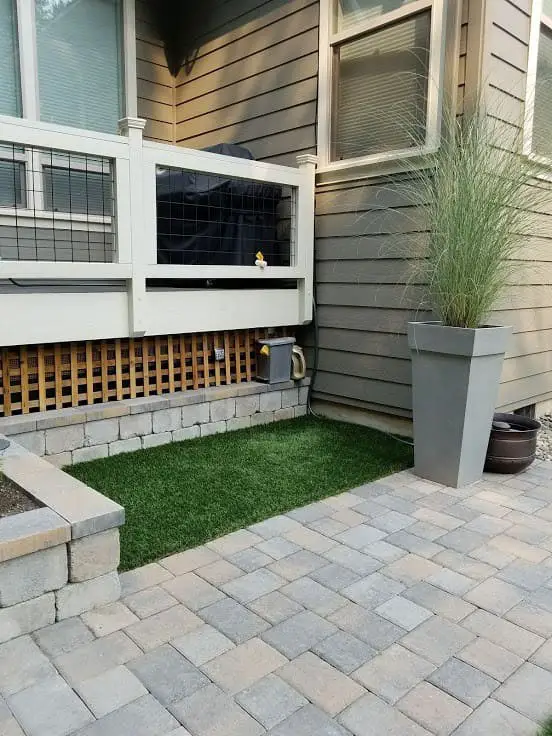
Opting for artificial turf in your dog’s potty area can be a highly effective solution, offering numerous benefits. This innovative alternative has evolved significantly and now mimics the appearance of real grass without the maintenance hassles. Artificial turf stands out as an excellent choice for several reasons. Firstly, it excels at handling wear and tear, allowing your furry friend to run, dig, and do its business without causing damage.
Additionally, cleaning is a straightforward process, reducing mess and stress levels for you.
Advantages of Artificial Turf
The benefits of opting for artificial turf are numerous. One significant advantage is that it eliminates the need for constant watering. This means you can enjoy a lush, green lawn all year round without worrying about muddy puddles or unsightly brown spots caused by pet accidents. Additionally, artificial turf is an excellent choice for those who suffer from allergies, providing a pollen-free zone for both humans and animals alike.
Furthermore, artificial turf is not appealing to pesky insects like fleas and ticks, ensuring your dog has a clean and safe environment to play in. This, in turn, provides peace of mind for pet owners.
Installation and Maintenance Tips
When it comes to installing artificial turf, there are a few key considerations to keep in mind. First and foremost, you’ll want to ensure a solid foundation – think crushed rock or sand – that allows for proper drainage. A soggy backyard is no one’s friend! Next, roll out your turf and secure it firmly to prevent any wrinkles or bumps from forming. You want the surface to be smooth and even, so your furry friends can frolic freely without tripping over any imperfections.
In terms of maintenance, cleaning artificial turf is a breeze. Simply scoop up any debris and give the area a good spray with water every now and then to keep things tidy. A quick brush also goes a long way in keeping the surface looking fresh and natural. And for those pesky odors that can arise, try mixing equal parts vinegar and water as a gentle yet effective solution. Not only is this eco-friendly, but it’s also safe for both your turf and your pets.
Pea Gravel Section

When considering options for your dog’s potty area, pea gravel often flies under the radar despite being an incredibly practical solution. Not only does it excel at drainage, ensuring the area remains dry and free from unpleasant odors, but its ease of use is another major drawcard. The material is effortless to clean and maintain, a consideration that can’t be overstated for any pet owner. Let’s take a closer look at why pea gravel might just be the most sensible choice for your backyard setup.
Benefits of Using Pea Gravel
Pea gravel offers a multitude of benefits when it comes to creating a comfortable and practical outdoor space for your furry friend. One of its most significant advantages is its ability to facilitate smooth water drainage, allowing rainwater to flow through effortlessly and preventing the formation of muddy puddles. This is particularly beneficial during wet seasons, as it eliminates the need for constant cleaning and reduces the risk of mud being tracked into the home.
Additionally, pea gravel’s smooth surface is incredibly gentle on your dog’s paws, making it an ideal choice for pet owners who prioritize their pet’s comfort and well-being. Furthermore, maintaining a pea gravel-covered area is surprisingly easy. In the event of an accident, a quick scoop and rinse are all that’s required to remove waste and keep the area clean and hygienic.
This ease of maintenance makes pea gravel a top choice for busy pet owners who value their time and would rather spend it playing with their dog than cleaning up after them.
Setting Up and Maintaining a Pea Gravel Area
To initiate a pea gravel potty area, begin by selecting a flat and easily accessible spot. Next, deploy a barrier cloth to prevent weeds from intruding and spoiling your setup’s appearance. On top of this, distribute two inches of pea gravel to create the foundation. With minimal upkeep required, regularly rake the gravel to maintain an even and clean surface, while also periodically replacing it to refresh the area and control odors, thus ensuring a hygienic environment for your dog.
Mulch or Wood Chips

When it comes to choosing a potty area solution for your dog, consider opting for biodegradable materials like mulch or wood chips. This eco-friendly option not only benefits the environment but also provides excellent drainage and is gentle on your yard. In addition to being environmentally friendly, these materials can be a practical choice for pet owners.
To learn more about why biodegradable potty areas might be the right fit for you and how to keep them safe and comfortable for your furry friend, let’s take a closer look.
Benefits of Using Mulch or Wood Chips
When it comes to creating a comfortable and functional area for your dog to do their business, mulch and wood chips are excellent options. One of the key benefits is their impressive moisture-absorbing capabilities, which help reduce mud and maintenance in the long run. Rainy days become less of an issue, as the material’s natural absorption properties minimize the risk of muddy paw prints making their way back into your home.
As an added bonus, these materials break down over time, gradually releasing nutrients back into the soil – a sustainable and eco-friendly approach to dog waste management. The texture of mulch and wood chips is also surprisingly pleasant for paws to walk on, providing a soft and comfortable surface for your dog to use. Furthermore, these natural materials possess inherent odor-controlling properties.
Wood, particularly cedar, is renowned for its inviting aroma and ability to keep unpleasant smells at bay, creating a more enjoyable outdoor space for both you and your furry friend.
Considerations for Dog Safety and Comfort
When selecting mulch or wood chips for your dog’s outdoor area, safety should be a top priority. Not all products are created equal, so it’s essential to opt for dog-safe options. Natural, untreated wood products are the way to go, as some alternatives like cocoa bean shells can be toxic if ingested by your pet.
To set up the area effectively, consider laying down a fabric weed barrier first, which will keep the chips in place and prevent them from mixing into the soil, making cleanup and maintenance easier. A tidy and functional space is key. Regular upkeep is also necessary to keep the wood chip or mulch area fresh. This includes raking and turning over the material regularly to prevent mold and fungi from forming, particularly in wetter climates.
Additionally, you’ll need to replenish the layer every now and then to ensure it remains effective and clean.
Concrete Patio

When it comes to creating a designated potty area for your furry friend, consider the benefits of installing a concrete patio. This durable material stands out from the competition due to its exceptional durability and ease of cleaning. Withstanding heavy foot traffic is no issue for concrete patios, making them an ideal solution for high-traffic areas where your dog loves to roam.
In this sense, a concrete patio can be a game-changer for maintaining a neat and tidy backyard, as it eliminates the need for frequent cleanups and upkeep.
Reasons to Consider a Concrete Area
When it comes to choosing a surface for your backyard, concrete stands out due to its exceptional ease of cleaning and durability. Unlike grass or dirt areas, which require regular maintenance and can be prone to muddy paw prints and digging issues, concrete is remarkably low-maintenance. Spills, messes, and accidents are easily washed away with just a hose, leaving your yard smelling fresh and clean – no more unpleasant odors lingering in the air.
Furthermore, concrete’s durability means it can withstand even the most extreme weather conditions, from blistering sun to torrential rain, without becoming soggy or rutted over time. This results in a safer and more stable area for your dog to use, perfect for older dogs or those with mobility issues that require a solid, even surface.
Decorating Tips to Make the Space More Appealing
While concrete might not be the most exciting material, there are plenty of ways to enhance it and make it blend seamlessly with your outdoor space. One approach is to add some color to the mix by staining or painting the concrete to match your home’s exterior, deck, or other garden elements. The possibilities are endless! You can also get creative with patterns and textures by stamping the concrete while it’s still wet, giving it a unique look that mimics stone, tile, or even brickwork.
This not only adds visual interest but also elevates the space’s overall style. To further soften the edges of the concrete area, consider adding some border plants or small shrubs that can handle the occasional splash of water. When it comes to providing shade and making the space more inviting, a pergola or sun umbrella is a great solution. Not only will this provide a comfortable spot for your pup to relax in the heat, but it’ll also create a cozy atmosphere that’s perfect for humans too.
Potty Pads and Commercial Solutions
When it comes to managing your dog’s potty needs, two popular solutions are commercially available dog potty pads and synthetic grass mats. These products are designed for ease of use, making them ideal for apartment dwellers or homeowners without direct access to outdoor spaces. Both options offer a convenient and hygienic solution, but there are practical considerations to keep in mind when deciding between portable and fixed installations.
Introduction to Commercially Available Dog Potty Pads and Synthetic Grass Mats
Engineered to replicate the natural experience of grass, dog potty pads and synthetic grass mats offer a convenient solution for indoor use. These products are particularly well-suited for puppy training, supporting senior dogs’ mobility needs, or providing a designated area for your pet to eliminate without creating a mess. What sets these options apart is their ease of maintenance, allowing for effortless cleaning and preservation of a clean, odor-free living space.
Pros and Cons of Portable and Fixed Installations
Portable dog potty pads offer flexibility, allowing you to move them around based on your needs. This can be particularly useful during harsh weather conditions or when traveling. Their lightweight design, ease of replacement, and disposability make them a convenient option for temporary setups. However, it’s worth noting that larger breeds or very active dogs may not get the best experience with these pads as they might shift or overflow, potentially creating messes.
In contrast, fixed synthetic grass installations provide a more durable and permanent solution. These are designed to mimic real grass, complete with proper drainage for liquid waste disposal. This makes them an excellent choice for outdoor balconies or patios. While the initial setup may require more effort and upfront investment, the end result is a robust and long-term solution for dog potty needs that looks and feels more like natural grass.
Sand Box

Setting up a sandbox potty area for your dog is a practical solution when you need a designated spot that’s gentle on their paws and easy to maintain. While sandboxes are often associated with children, they can also provide a clean and controlled environment for dogs to do their business, particularly when grass or other materials aren’t feasible. To create a sandbox that meets the needs of both you and your furry friend, let’s go through the process step by step.
How to Create a Sandbox Potty Area
To create a functional and safe sandbox for your dog, start by selecting a location that’s easily accessible but also works with your yard’s layout. Aim for a spot that’s not too out of the way, allowing you to clean it efficiently, yet still provides some seclusion for your furry friend. This balance is crucial in setting the stage for a successful sandbox experience. Next, focus on constructing the box itself. Opt for non-toxic, sturdy materials like untreated wood to frame your sandbox.
Ensure the borders are high enough to contain the sand, but low enough for your dog to step over comfortably. A good starting point is to aim for a height of around 12-18 inches. Line the bottom of the box with a weed barrier cloth to prevent grass and weeds from growing up through the sand and to facilitate proper drainage. This layer will also help keep the sand clean and free from debris. Finally, fill the box with a suitable amount of play-grade sand, which is specifically designed for dogs.
This type of sand is smoother and safer than building sand, which can be rough and contain impurities. Aim for a depth of around 6-8 inches, allowing your dog to dig and play without hitting the base immediately.
Maintenance Tips to Keep the Area Clean and Odor-Free
Maintaining a sand potty area for your dog requires consistent attention to keep it clean, hygienic, and free of unpleasant odors. A crucial daily task is removing waste using a specialized scoop or rake designed specifically for sand, preventing the buildup of bacteria that can make the area uninviting for both your pet and family members. Regularly replacing the sand, ideally every few months depending on usage, helps maintain a fresh and clean environment.
To further minimize odors, natural deodorizers like baking soda can be sprinkled over the sand without harming your dog. In addition to these steps, occasional raking of the sand ensures it remains well-aerated and dry, discouraging the growth of molds and fungi. If the sandbox is outdoors, ensure it’s covered during rainy days to prevent waterlogging, which can make maintenance more challenging.
Enclosed Compost Area
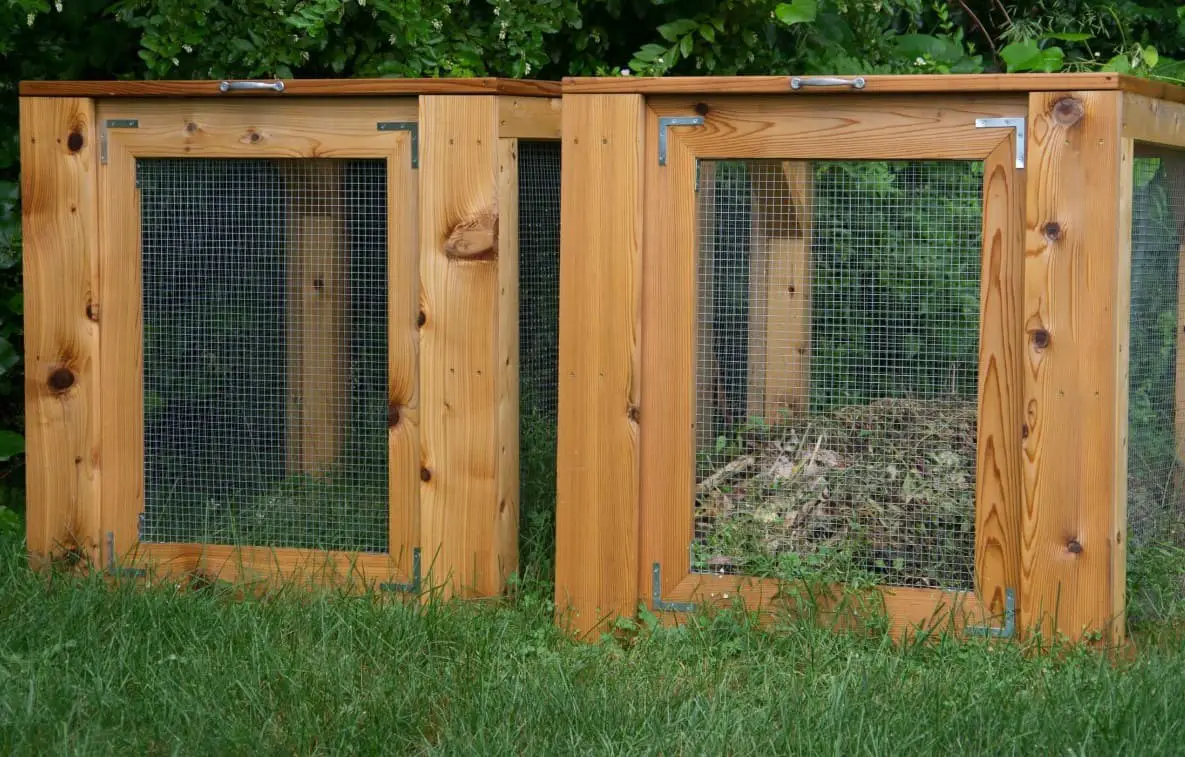
Setting up an enclosed compost area for your dog’s potty waste can be a game-changer for eco-friendly pet ownership. Not only does this approach minimize the environmental impact of pet waste by reducing landfill contributions, but it also offers the unique opportunity to convert that waste into nutrient-rich compost for non-edible plants. To achieve this, let’s dive into the steps for establishing and maintaining a safe, effective, and environmentally responsible composting area.
Exploring the Possibility of an Eco-Friendly Composting Dog Potty
While the concept of composting dog waste isn’t novel, executing it effectively is paramount to prevent health hazards. The reality is that canine excrement can harbor detrimental pathogens, and if not managed correctly, it can pose threats to both human health and the environment. Nevertheless, with a suitable setup and upkeep, you can safely transform the waste into compost suitable for ornamental gardening purposes, rather than vegetable or fruit cultivation.
This system’s primary advantage lies in its eco-friendliness; by leveraging a natural process, you’ll be recycling nutrients back into the earth, eliminating the need for plastic bags and trash bins. Moreover, this approach is particularly convenient for pet owners tired of dealing with daily dog waste disposal methods that feel wasteful.
Instructions on How to Build and Maintain a Composting Area
To initiate the composting process, create a small, enclosed space in your yard where you can control the decomposition. You can opt for a commercially available dog waste composter or build one from a trash can with a locking lid. Add drainage holes to the bottom and place it on a bed of rocks for improved aeration and leaching. Begin by filling the base with a layer of sawdust or straw to absorb liquids, followed by an enzyme digester specifically designed for pet waste.
This accelerator will help control odors and speed up decomposition, ensuring the waste breaks down safely. To maintain this area effectively and hygienically, it’s crucial to add a carbon-rich material like sawdust or shredded paper every time you introduce new waste to balance nitrogen levels and manage odors. Regularly turn the compost to oxygenate it, preventing anaerobic processes that can cause unpleasant smells and impede decomposition.
Keep the compost moist but not wet, monitor temperature fluctuations, and be patient. Dog waste takes longer to decompose safely than typical yard waste and should not be used on crops for human consumption. After a full year of composting, you can utilize this material on ornamental plants, providing a free source of fertilizer that also contributes to the environment’s well-being.
Dedicated Flower Bed Border
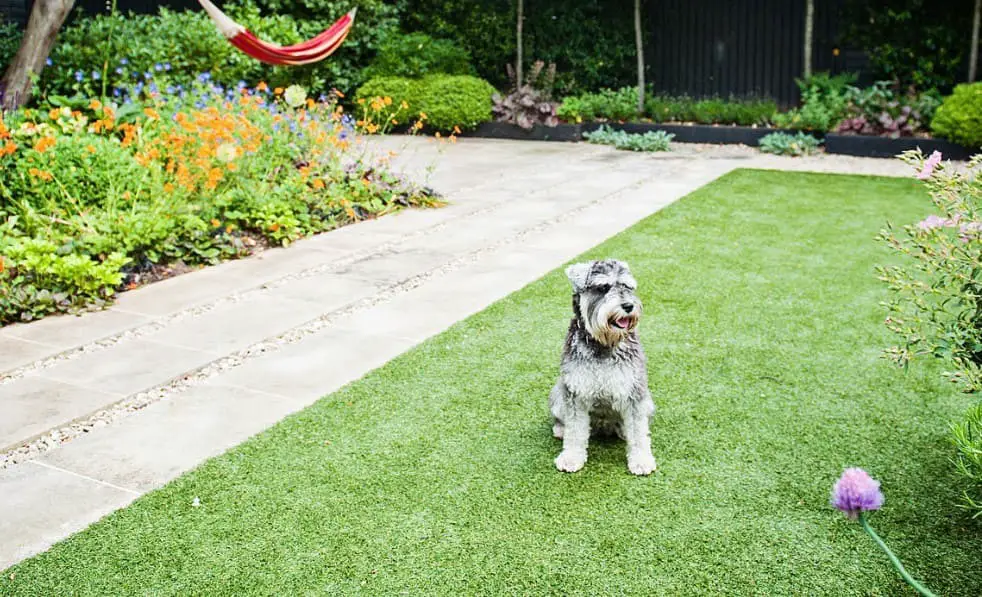
Transforming a dedicated flower bed border into a potty area for your dog is a thoughtful approach that not only provides a functional solution but also elevates the overall visual appeal of your outdoor space. By leveraging natural boundaries, you can create a seamless blend of utility and aesthetics, making this creative solution a standout feature in your yard. To achieve success with this setup, let’s dive into the steps to set up this area and select the perfect plants to make it thrive.
Using a Small Section of a Flower Bed as a Potty Area to Create Natural Boundaries
By strategically incorporating a designated potty area within your flower bed, you can optimize your outdoor space, freeing up more room for other activities and pursuits. To achieve this, identify a corner or less conspicuous section of your existing garden and dedicate it to your dog’s needs. This thoughtful placement allows you to maintain the beauty of your garden while providing a dedicated spot for your pet to do their business.
To further define this space, consider incorporating decorative edging materials such as stones, bricks, or low fencing. These boundary markers not only contain the potty area but also clearly communicate to your dog where they should go. The dual functionality of this setup is what makes it particularly practical – it serves both as a potty area and contributes to the overall aesthetic appeal of your garden.
Moreover, it simplifies waste management by confining the output to one designated location, making cleaning a more manageable task.
Selection of Plants That Are Safe and Resilient to Nitrogen
When selecting plants for the border around a dog’s potty area, it’s essential to prioritize species that not only thrive in high-nitrogen environments but are also non-toxic to dogs. Opting for nitrogen-loving plants like tall fescue and ryegrass, which are robust grasses capable of handling excessive nitrogen levels, is a great starting point.
For a more varied approach, consider incorporating flowering annuals such as marigolds or perennials like daylilies, which not only add visual appeal but also possess the hardiness to flourish in nutrient-rich soil. Always prioritize plant safety for canine companions by selecting species that are non-toxic if ingested. To further safeguard your plants and promote soil health, consider applying a layer of mulch around the potty area.
This can help mitigate the impact of dog urine on the surrounding vegetation, reducing direct contact and preventing potential harm. Regular watering of the area can also aid in diluting the urine, preserving plant vitality while maintaining a clean and fresh environment.
Patio Stones with Drainage System

Transforming your backyard into a functional and visually appealing space for your furry friend involves more than just laying down some stones. A well-designed patio stone area with proper drainage is a game-changer, especially when it comes to creating a hassle-free dog potty area. Not only will it add a touch of elegance to your outdoor space, but it’ll also make cleaning up after your pet a breeze. To achieve this seamless setup, you’ll need to focus on the following key aspects:
The Logistics of Setting Up a Patio Stone Area with Proper Drainage
When it comes to creating a patio stone area, effective drainage is crucial for a functional and aesthetically pleasing space. To achieve this, start by selecting permeable pavers that allow liquid to pass through, minimizing standing water and unpleasant odors. A well-draining base layer is also essential – install a foundation of crushed stone or gravel to prevent water accumulation under the stones and promote efficient drainage.
For added protection against moisture buildup, consider implementing a comprehensive drainage system beneath the patio stones. This can be achieved by creating a sloped base that directs water away from your house or utilizing a French drain system, which involves a gravel-filled trench that efficiently redirects water and promotes rapid drying.
Ensure that any drainage features you install direct water flow away from your home and into an area where it can safely absorb or collect the runoff, eliminating the risk of damage or erosion.
Maintenance Advice to Prevent Odor and Buildup
To keep your patio stone area in top condition, you’ll need to devote some regular attention to prevent unpleasant odors and buildup from occurring. A key aspect of this is maintaining a tidy space by sweeping the stones frequently to remove debris that can clog the gaps between them, thereby preserving their natural permeability. It’s also essential to periodically hose down the area to flush out any residue that may have accumulated on or beneath the stones.
This will help prevent stubborn stains from forming and ensure your patio remains clean and odor-free.
When it comes to addressing odors specifically, you’ll want to use enzyme-based cleaners that are designed to break down the proteins in pet waste. These products are effective at neutralizing unpleasant smells without causing any damage to your patio stones or harming your pets.
Another crucial step is to regularly inspect your drainage system to guarantee it remains unobstructed and functioning properly. If you neglect this task, water can begin to pool, leading to odor and hygiene issues that can be difficult to resolve.
Conclusion
When considering an outdoor space that meets both human and canine needs, incorporating a patio stone area with efficient drainage is a savvy move. Not only does it boost the visual appeal of your backyard, but it also provides a practical solution for addressing pet waste management. By selecting the right materials and ensuring proper installation, you can create a long-lasting, low-maintenance zone that remains clean and odor-free.
Regular maintenance and effective cleaning methods will help keep your patio looking its best and hygienic over time, making this investment worthwhile for both you and your furry friend. This approach not only streamlines pet care but also enhances the overall usability and enjoyment of your outdoor space.
FAQs about Backyard Dog Potty Area Ideas
What are some cost-effective materials for creating a backyard dog potty area?
When it comes to creating a backyard dog potty area, three budget-friendly options stand out: gravel, pea gravel, and mulch. Not only are they easy on the wallet, but they’re also readily available and offer excellent drainage properties, making them ideal for maintaining a clean and odor-free space.
How can I ensure my backyard dog potty area is environmentally friendly?
When creating an eco-friendly backyard dog potty area, consider substituting traditional materials with sustainable alternatives. Organic mulch and recycled rubber mats are excellent options to minimize the environmental impact of your outdoor space. Furthermore, implementing a dog waste composting system can significantly reduce landfill waste and provide valuable nutrient-rich garden compost.
What are the best plants to include around a backyard dog potty area to minimize odors?
When it comes to creating a welcoming outdoor space for dogs, incorporating certain plants around the potty area can be incredibly effective. Specifically, plants like lavender, mint, and lemongrass are excellent choices due to their natural odor-neutralizing properties. Not only do they help eliminate any unpleasant smells, but they also bring visual appeal to your yard and can flourish in a range of climates.
How do I maintain hygiene in the dog potty area to prevent diseases?
For a clean and hygienic dog potty area, regular maintenance is essential. Daily removal of waste is vital to prevent the buildup of bacteria and unpleasant odors. Additionally, flushing or washing the area regularly ensures that it remains free from harmful microorganisms and unwanted smells. Furthermore, utilizing an enzyme-based cleaner can efficiently break down waste and sanitize the area, promoting a healthier environment for your furry friend.
Can I use artificial turf for a dog potty area, and what are the maintenance tips?
Artificial turf can be an excellent choice for a dog potty area, offering durability, a natural appearance akin to real grass, and relatively low maintenance upkeep. To maintain its cleanliness and effectiveness, it’s crucial to regularly rinse the turf with water to flush out urine and debris. Additionally, brushing the fibers on a regular basis will help keep them upright and functional.
Furthermore, consider utilizing a turf deodorizer to effectively manage any unpleasant odors that may arise.

